Oldest active military units still in operation
| Start of continuous operation | Heraldry | Name | Founder | Founding location | Current location | Notes | Ref. |
|---|---|---|---|---|---|---|---|
| 1248 | 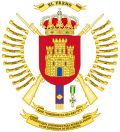 | Infantry Regiment "Inmemorial del Rey" No. 1 | Ferdinand III of Castile | | It was one of the first standing units in Europe since the fall of the Western Roman Empire, remaining in the order of battle of the Castilian and Spanish armies since its creation. At present the regiment is the unit responsible for providing the central seat of Spanish Army Headquarters security, services, and support needed for its functioning.[ independent source needed ] | [1] [2] [ better source needed ] | |
| 1317 | Portuguese Navy | Denis of Portugal | | | The oldest continuously serving navy in the world, founded on February 1, 1317, when King Denis of Portugal appointed Manuel Pessanha to serve as the Admiral of Portugal. | [3] [4] | |
| 1479 |  | 1st Infantry Regiment | King Louis XI | | Founded in 1479-1480 by King Louis XI as Bandes de Picardie. It became the Légion de Picardie in 1558 during the Italian War of 1551–1559 and then Régiment de Picardie on May 29, 1569. It was ultimately renamed 1er régiment d'infanterie de ligne in 1791 after the military reforms of Louis Le Bègue Duportail. It is now part of the Franco-German Brigade (French units of the brigade are part of 1st Division) and was recently deployed in Afghanistan, Mali, and the Central African Republic.[ independent source needed ] | [5] | |
| 1485 |  | Yeomen of the Guard | King Henry VII | St. James's Palace, London, United Kingdom | The King's Body Guard of the Yeomen of the Guard is a bodyguard of the British Monarch. The oldest British military corps still in existence, it was created by King Henry VII in 1485 after the Battle of Bosworth Field. The Yeomen today are purely ceremonial, and perform ceremonial and royal duties at State Opening of Parliament, The Most Noble Order of the Garter, Maundy Service, Royal Garden Parties, Investitures, Coronations, plus other events such as Royal Weddings and Royal Funerals, Epiphany, State Visits and Diplomatic Receptions. They are all based and administered from St James's Palace. | [6] | |
| 1488 |  | Royal Netherlands Navy | Maximilian I | Maximilian I issues a Statute of Admiralty in 1488, laying the foundations for the current Royal Netherlands Navy. | [7] [8] [9] | ||
| 1509 |  | Infantry Regiment "Soria" No. 9 | Ferdinand II of Aragon | | Founded in 1509 as "Tercio of Napoli" or "Tercio de Zamudio". It is the second oldest regiment still used for overseas military operations. | [10] [11] | |
| 1521 |  | Life Guards | King Gustav Vasa | | Founded in 1521 as the Royal bodyguards to Gustav Vasa | [12] | |
| 1534 |  | Tercio Viejo de Sicilia | Charles I of Sicily | | Founded in 1534 to control the possessions the Kings of Sicily who at that time resided abroad, the tercio participated in numerous battles including the battle of Lepanto. In recent years, its units have participated in international missions in Bosnia Herzegovina, Lebanon, Kosovo, Iraq, and Afghanistan. | [13] | |
| 1537 |  | Spanish Marine Infantry | Charles V, Holy Roman Emperor | | Founded on 27 February 1537 when Old Sea Companies of Naples were permanently assigned to Mediterranean Galley Squadrons.[ citation needed ] | ||
| 1537 | Honourable Artillery Company | King Henry VIII | | Incorporated by Royal Charter in August 1537 by King Henry VIII as the Fraternity or Guild of Artillery of Longbows, Crossbows and Handguns. Fought with distinction in both World Wars. The oldest surviving regiment in the British Army (now part of the Army Reserve). | [14] | ||
| 1546 |  | Royal Navy | King Henry VIII | | The Royal Navy (RN) is the naval warfare force of the United Kingdom. Although warships were used by English and Scottish kings from the early medieval period, the first major maritime engagements were fought in the Hundred Years' War against France. The modern Royal Navy traces its origins to the English Navy of the early 16th century; the oldest of the UK's armed services, it is consequently known as the Senior Service. | [15] | |
| 1556 |  | 2nd Dragoon Regiment | Louis I, Prince of Condé | Despite the recent formation of the regiment in its current configuration, it is the oldest French cavalry regiment, dating back to 1556. The French Revolution gave it the designation of the second regiment of dragoons in the French Army, and with brief interruptions it has served under this name in successive French armies ever since. It is the French Army NBC Defense Unit. Still in Service. | [16] | ||
| 1614 |  | Guard Hussar Regiment | King Christian IV | Unit amalgamated with and perpetuates Zealand Life Regiment, which was disbanded on 1 January 2001 | [17] | ||
| 1624 |  | Skaraborg Regiment | King Gustav II Adolf | The regiment traces its origins to the 16th century and a grand regiment formed in 1613 which was split into the Skaraborg Regiment and the now disbanded Älvsborg Regiment and Västgöta-Dal Regiment in the early 1620’s. | [18] | ||
| 1625 |  | Dalarna Regiment | King Gustav II Adolf | Current formation from 2021; traces its origins to fänikor raised in 1542 and became part of a grand regiment, Uppland Grand Regiment, formed in 1615 but became a separate regiment in 1625. | [19] | ||
| 1626 |  | Pori Brigade | King Gustav II Adolf | On 16 February 1626, King Gustav II Adolf of Sweden founded the Royal Pori Regiment during the Thirty Years' War. The regiment served in most wars of the great power era of Sweden, and was destroyed and reformed several times during the Great Northern War. | [20] [21] | ||
| 1636 |  | 181st Infantry Regiment | | (United States) | Part of the Massachusetts National Guard | [22] [23] | |
| 1636 |  | 182nd Infantry Regiment | | (United States) | Part of the Massachusetts National Guard | [22] | |
| 1636 |  | 101st Field Artillery Regiment | | (United States) | Oldest field artillery unit in the United States Army and Massachusetts National Guard. The 101st FA was an infantry unit until 1897. | [24] | |
| 1642 |  | Scots Guards (third regiment of foot guards) | King Charles I | Raised in 1642 to form a personal body guard to King Charles I when he campaigned in Ireland; became part of English Army in 1661 | [25] | ||
| 1646 |  | Norrland Dragoon Regiment | Queen Christina | The regiment traces its origins to the Ångermanland, Medelpad and Jämtland Regiment raised in 1646, renamed Jämtland Dragoon Regiment in 1689 but with only one semi-separate company of cavalry which was later reorganized as a regiment. It received its current name in 1892. | [26] | ||
| 1648 |  | Danish Artillery Regiment | Current formation from 2019; traces origins back to 1648. | [27] | |||
| 1650 | 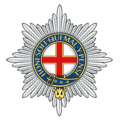 | Coldstream Guards | George Monck, 1st Duke of Albemarle | Raised in 1650; became part of the English Army in 1661. | [28] | ||
| 1656 |  | Grenadier Guards | Thomas Wentworth, 5th Baron Wentworth, John Russell | Senior Regiment of the Guards Division | [29] | ||
| 1656 |  | 5th Dragoon Regiment | King Louis XIV | A cavalry regiment of the French Army, created under the Ancien Régime in 1656 | [30] | ||
| 1658 |  | Royal Life Guards | King Frederick III | Both a Guard/Ceremonial unit of the Danish Monarch and Infantry Regiment of the Danish Army | [31] | ||
| 1659 |  | 1st Regiment "Granatieri di Sardegna" | Duke Carlo Emanuele II di Savoia | Formed April 18, 1659 as the "Reggimento delle Guardie" | [32] | ||
| 1664 |  | Royal Marines | King James II | Now roughly brigade size. | [33] | ||
| 1665 |  | Korps Mariniers | Johan de Witt and admiral Michiel de Ruyter | The Korps Mariniers was raised as the Regiment de marine during the second Anglo-Dutch War. Today it is roughly 3 battalions strong. | [34] | ||
| 1670 |  | Jämtland Ranger Corps | King Charles XI | Current formation from 2021; the Jämtland Ranger Corps shares its origin in the Ångermanland, Medelpad and Jämtland regiment with the Norrland Dragoon Regiment. | [35] | ||
| 1670 |  | Jutland Dragoon Regiment | Field marshal Ernst Albrecht von Eberstein | [36] | |||
| 1670 |  | South Carolina State Guard | | (United States) | Founded in 1670 as the Charleston Militia. Served in Revolutionary War, War with Mexico, Spanish-American War. Later "South Carolina State Defense Force" (c. 1941), renamed "South Carolina State Guard" (1944). | [37] | |
| 1699 |  | 2nd Motorized Infantry Battalion | Peter II of Portugal | Principality of Brazil | Brazil | The 2nd Motorized Infantry Battalion, originated from the royal charter of September 29, 1699, when four companies of infantrymen arrived in the city of Rio de Janeiro from Lisbon. These companies formed The New Rio de Janeiro Tercio (to distinguish it from the existing Old Tercio), which was distributed among the garrisons of the forts defending Guanabara Bay. | |
| 1707 | 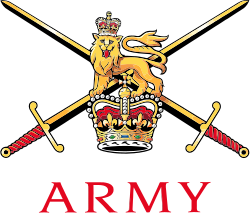 | British Army | King Charles II of England | The British Army traces back to 1707 and the formation of the united Kingdom of Great Britain which joined the Kingdoms of England and Scotland into a single state and, with that, united the English Army and the Scots Army as the British Army. | [38] | ||
| 1716 | 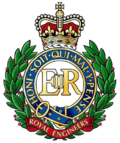 | Corps of Royal Engineers | Board of Ordnance | Formed by the Board of Ordnance in 1716, can trace their origins back to the military engineers brought to England by William the Conqueror. | [39] | ||
| 1741 |  | 211th Military Police Battalion | | (United States) | Part of the Massachusetts National Guard | [40] | |
| 1742 |  | 116th Infantry Regiment (United States) | | (United States) | Oldest unit in continuous operation in the Virginia National Guard. Today part of the 116th Brigade Combat Team, 29th Infantry Division | [41] | |
| 1747 |  | 111th Infantry Regiment | Benjamin Franklin | | (United States) | The 111th is the oldest unit in the Pennsylvania National Guard. Today, 1st Battalion, 111th Infantry is part of the 56th Stryker Brigade Combat Team, 28th Infantry Division | [42] |
| 1758 |  | Madras Regiment | East India Company | | The Madras Regiment is the oldest infantry regiment of the Indian Army, originating in the 1750s. In 1758 Stringer Lawrence raised the Madras Regiment, forming the several Companies of Madras Levies into two battalions. | [43] | |
| 1759 | Punjab Regiment | East India Company | | The Punjab Regiment is the oldest infantry regiment of the Pakistan Army. It traces its roots to the senior-most battalion of the 1st Punjab Regiment, currently existing as the 1st Battalion, Punjab Regiment. | [44] | ||
| 1761 |  | Punjab Regiment | East India Company | | The Punjab Regiment is second oldest regiments still in service in the Indian Army, and is the most senior regional infantry regiment. It was formed from the 2nd Punjab Regiment of the British Indian Army in 1947. | [45] | |
| 1768 | 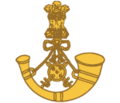 | Maratha Light Infantry | East India Company | | The Maratha Light Infantry is a light infantry regiment of the Indian Army. It traces its lineage to the Bombay Sepoys, raised in 1768, making it the most senior light infantry regiment in the Indian Army. | [46] | |
| 1774 |  | 175th Infantry Regiment | Mordecai Gist | | (United States) | Oldest unit still in operation in the Maryland National Guard. | [47] |
| 1775 | Queen's York Rangers (1st American Regiment) | Robert Rogers | | The Queen's York Rangers (1st American Regiment) (RCAC) is a Canadian Army Primary Reserve Royal Canadian Armoured Corps regiment based in Toronto and Aurora. It was founded in 1775 as the Queen's Rangers however it traces its origins back to 1756. | [48] [49] [50] | ||
| 1775 |  | Rajputana Rifles | East India Company | | The Rajputana Rifles is the oldest rifle regiment of the Indian Army. It was raised in January of 1775 as 5th Battalion, Bombay Sepoys. | [51] | |
| 1776 |  | 1st Battalion, 5th Field Artillery Regiment | Alexander Hamilton | | 1st Battalion, 5th Field Artillery is the oldest unit in the U.S. Regular Army and the only existing Regular Army unit that fought in the American Revolution. | [52] | |
| 1787 |  | The Grenadiers | East India Company | | The Grenadiers is an infantry regiment of the Indian Army, formerly part of the Bombay Army and later the pre-independence British Indian Army, when the regiment was known as the 4th Bombay Grenadiers. | [53] | |
| 1790 |  | United States Coast Guard (as the Revenue Marine) | District of Columbia | The US Coast guard is the maritime security, search and rescue, and law enforcement service branch of the United States Armed Forces and one of the country's eight uniformed services. | |||
| 1790 | Veteran Corps of Artillery of the State of NY | New York City | Federally- and state-recognized Field Artillery unit founded at the end of the Revolutionary War to prevent a return of the British. Founded in 1790, it is the oldest military unit in New York State. | ||||
| 1795 | Royal Newfoundland Regiment | Thomas Skinner | | The Royal Newfoundland Regiment is an infantry regiment of the Canadian Army. It fought in the War of 1812, World War I, World War II, and the War in Afghanistan. The regiment was founded in 1795 however it traces its origins back to 1704. | [54] [55] | ||
| 1795 |  | Jat Regiment | East India Company | | The Jat Regiment is part of the infantry of the Indian Army. Numerous battalions of the Jat Regiment, including the 14th Murray's Jat Lancers, fought in the First World War. | [56] | |
| 1795 |  | Border Guards Bangladesh | East India Company | | The Border Guards Bangladesh is a paramilitary force responsible for the border security of Bangladesh. This force started its journey on 29 June 1795 with the name of 'Ramgarh Local Battalion' previously named 'Frontier Protection Force' formed by East India Company in 1794. | [57] | |
| 1796 | Royal Army Veterinary Corps | Board of Ordnance | | The Royal Army Veterinary Corps was founded in 1796 after public outrage concerning the death of Army horses. Prior to this date, the management and care of army horses had been left to each individual regiment's Quartermaster. | [58] | ||
| 1798 |  | Baloch Regiment | East India Company | | The Baloch Regiment is an infantry regiment of the Pakistan Army. Its senior-most battalion, the 1st Battalion, was raised in 1798 as the 3rd Extra Battalion of Madras Native Infantry at Masulipatam. | [59] | |
| 1809 |  | Military Police of the State of Rio de Janeiro | John, Prince Regent | Principality of Brazil | Brazil | Created in 1809 by Dom João de Bragança, then Prince Regent, under the name of Military Division of the Royal Police Guard of Rio de Janeiro. | |
| 1814 |  | Swiss Guard | Pope Julius II | Although the Swiss Guard was founded in 1506 and is one of the oldest active military units presently in existence, they were disbanded and reorganized multiple times. The most recent iteration of the Swiss Guard began in 1814, after being disbanded in 1809. | [60] [61] | ||
| 1842 |  | Engineer Regiment | King Christian V | Current formation from 1997 as amalgamation of regiments from 1842; traces origins back to 1684 | [62] |